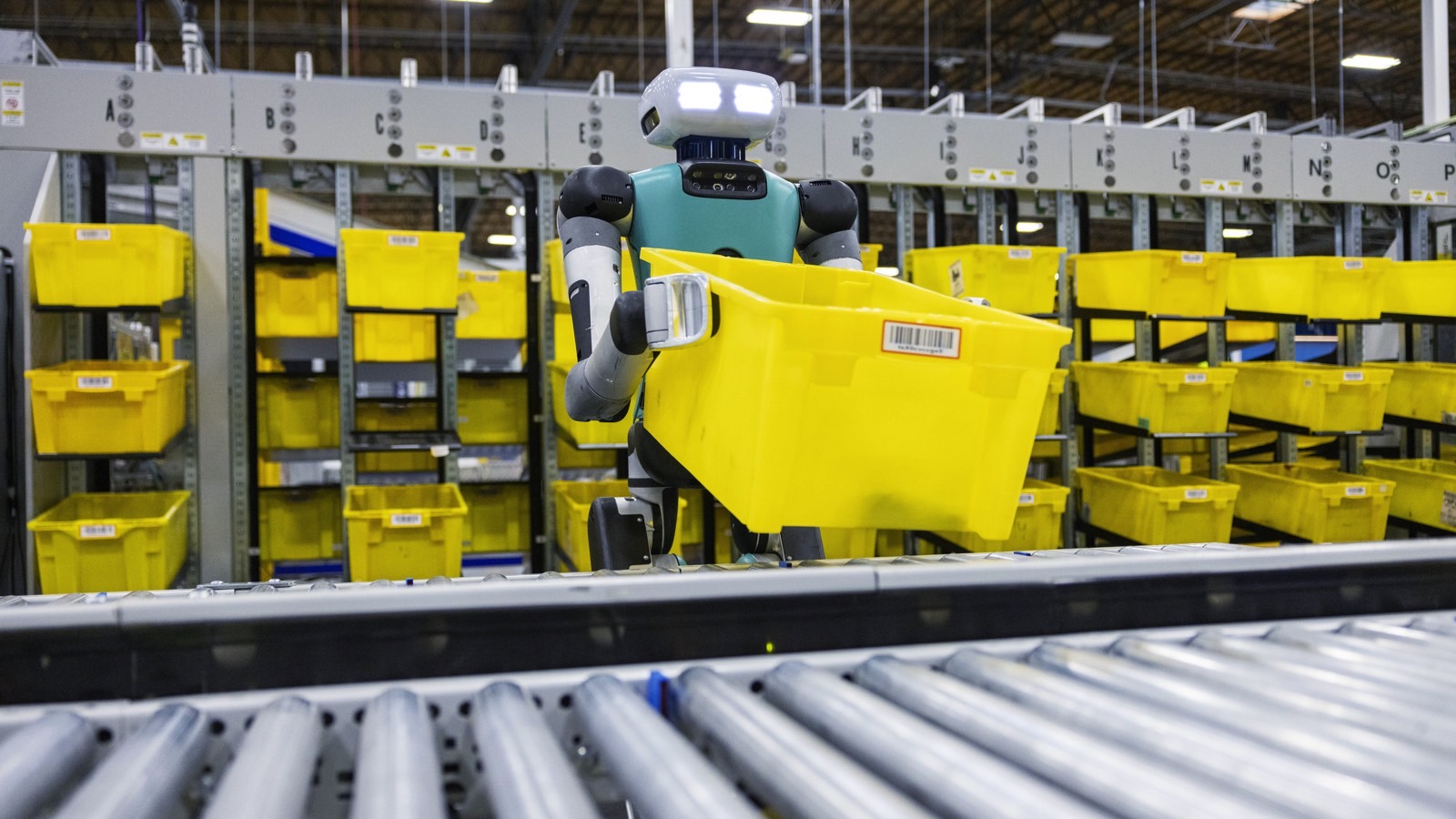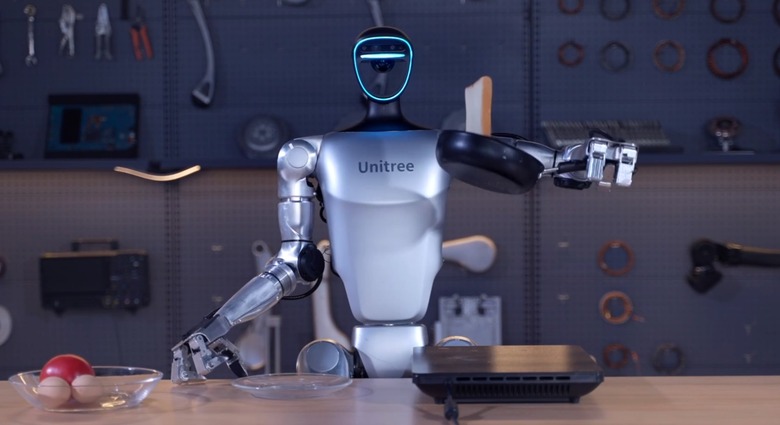Humanoid AI Robots May Soon Jump Out Of Amazon Vans To Deliver Packages
One of the great things about Amazon is its fast delivery options, especially if you're an Amazon Prime subscriber. That speed is made possible by a massive logistics operation. Amazon stocks products in huge warehouses around the world, and those fulfillment centers can quickly ship goods to nearby customers once an order is placed.
Amazon has also come up with new ideas to improve delivery times, like using drones in certain regions or shipping goods directly to your home or car.
It's no surprise that the next big idea to enhance Amazon deliveries (and reduce costs) involves artificial intelligence. Amazon is reportedly considering using humanoid robots powered by generative AI programs to deliver packages to your door.
That kind of test makes sense, given the AI boom we're living through. Most of us interact with AI through apps on our phones or desktops, but we've also seen impressive advances in genAI for robotics in recent years. Soon enough, humanoid robots will use AI software to understand their surroundings and carry out instructions.
Those instructions might involve telling a Unitree G1 robot (above) to hop out of a Rivian car when it reaches your neighborhood, grab the correct package from the back, and deliver it to your door. This is no longer science fiction, and Amazon is reportedly testing just such scenarios.
According to The Information (via The Verge), Amazon is conducting tests at one of its San Francisco facilities.
Amazon has reportedly built an indoor humanoid park about the size of a coffee shop. The obstacle course includes a Rivian van so the robots can practice the full package delivery process.
The company is testing various humanoid robots for this task, including the $16,000 Unitree G1 robot we covered a few months ago. I said then that I'd eventually want one of these for help around the house. If Amazon's tests go well, G1-style robots could be delivering orders before that day comes.

A few years ago, Amazon confirmed it was testing a humanoid robot called Digit from Agility Robotics. Those tests focused on warehouse work.
The current delivery tests haven't been officially confirmed, but The Information has a strong track record when it comes to inside scoops on tech companies.
Amazon also made a few AI-related announcements this week about its shipping logistics that seem to back up The Information's report.
According to Reuters, Amazon has created a new group at its Lab126 device unit focused on developing more capable warehouse robots. These machines will be able to handle more tasks than Amazon's current robots.
"We're creating systems that can hear, understand, and act on natural language commands, turning warehouse robots into flexible, multi-talented assistants," Amazon said in a statement.
The new robots will feature agentic AI that enables them to unload trailers and retrieve parts for repairs. That, in turn, should speed up delivery times for customers, according to Lab126 leader Yesh Dattatreya.
Separately, Amazon plans to use generative AI for improved mapping tools that will help drivers deliver packages more efficiently. The AI will provide more accurate building details than standard mapping apps, including shapes, obstacles, and tricky layouts.
Reuters suggests the tech might be paired with AR glasses Amazon is developing for drivers.
I'd add that this kind of AI software would also benefit humanoid robots making doorstep deliveries.
We don't yet know when AI-powered robots will start delivering packages or where they'll be deployed first. But given the pace of development in AI robotics, it probably won't be long, whether Amazon leads the way or someone else does.
There's one obvious issue that hasn't been addressed. Humanoid AI robots will eventually replace human workers, marking another way AI could take over human jobs. It'll be interesting to see how Amazon handles that messaging, especially considering its less-than-stellar history with employee relations.
You can check out the following video to see what a Unitree G1 robot is capable of right now. For more on AI robotics, here's what Figure and Google are working on.
